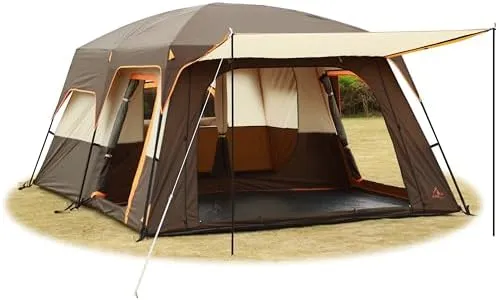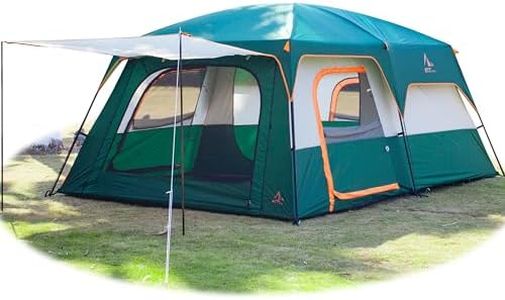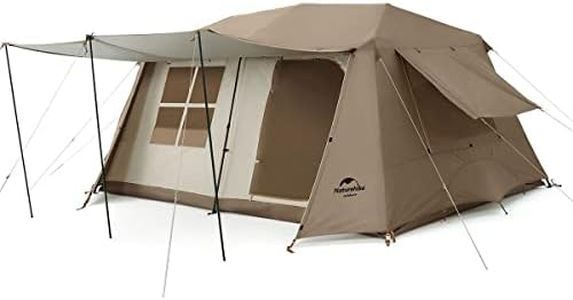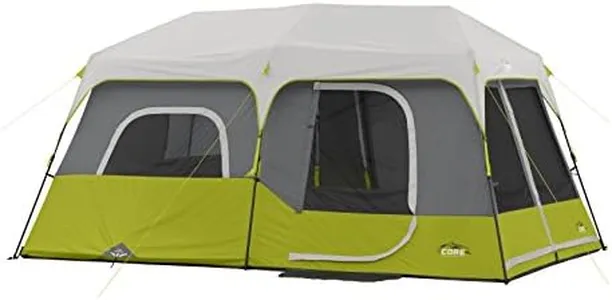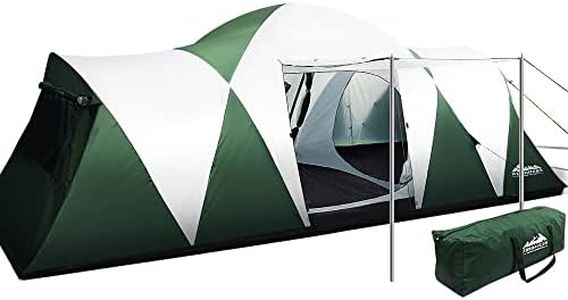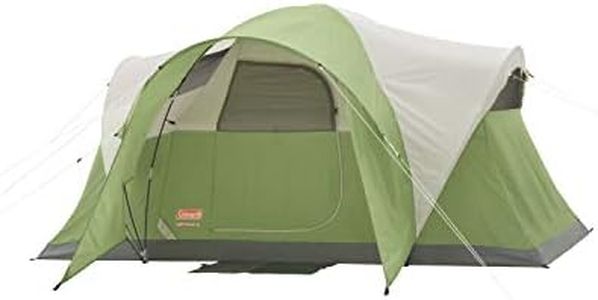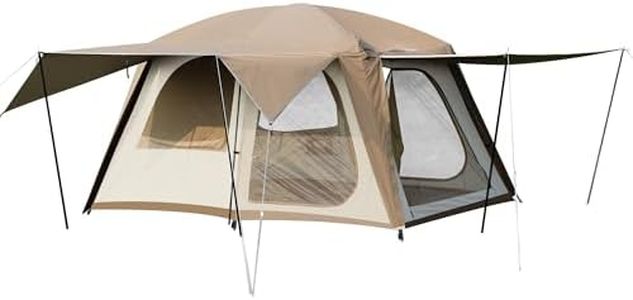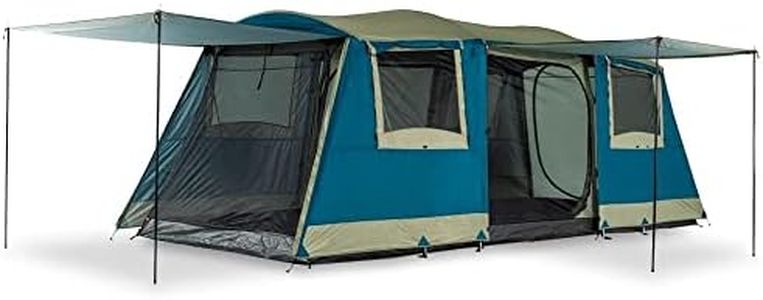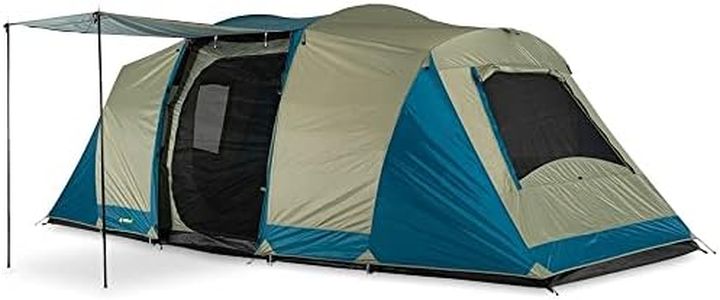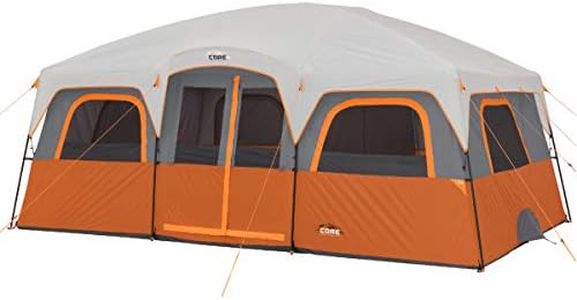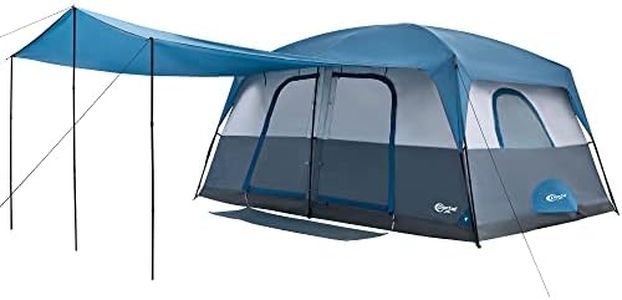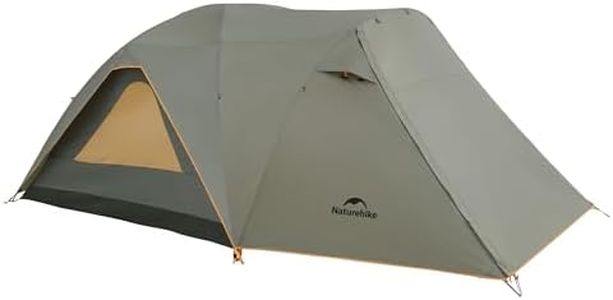We Use CookiesWe use cookies to enhance the security, performance,
functionality and for analytical and promotional activities. By continuing to browse this site you
are agreeing to our privacy policy
10 Best Multi Room Tent
From leading brands and best sellers available on the web.Buying Guide for the Best Multi Room Tent
Choosing a multi-room tent is about balancing comfort, convenience, and suitability for your camping group or family. Multi-room tents are great for providing privacy, organization, and extra space when camping with several people. Key things to look for include how the tent is divided, how easy it is to set up, how much space you really need, and whether it will offer weather protection during your trips. Always think about who’s going with you and their needs—sleeping, storage, and living space matter a lot. You’ll also want to factor in where and how often you plan to camp, as that affects which features will be most useful for you.Room ConfigurationRoom configuration refers to how the tent is divided into separate areas or 'rooms' using partitions or fabric walls. This matters because it affects privacy and organization inside the tent. Some tents have two rooms, great for parents and kids or two small groups, while others may have three or even four. More rooms mean more privacy and separate space for sleeping, gear, or even changing. If you just want a bit of privacy for two couples or parents and kids, two rooms are usually enough. If your group has different sleeping schedules or you want a separate area for lounging or storage, three or more rooms might suit you better. Think about your group’s habits to guide your choice.
Tent Size (Sleeping Capacity and Floor Area)Tent size is measured both by how many people it can sleep and the total floor area (usually given in square feet or meters). The importance here is comfort—you want everyone to sleep and move around comfortably, not just squeeze in like sardines. Small tents are usually for 4-6 people, which might be tight with gear, while large tents are for 8-12 people and often have room to stand up and walk around. If you value space or have a lot of gear, always size up from the stated capacity, as these numbers assume you’re sleeping closely together in sleeping bags. If you only camp occasionally or travel light, a tent with just enough room might be fine.
Ease of Set-UpThis refers to how simple and quick it is to get the tent ready for use, including inserting poles, staking out the tent, and setting up any room dividers. It’s important because the bigger and more complex the tent, the trickier it can be to set up, especially with fewer helpers or in bad weather. Some tents use instant or color-coded pole systems to help, while others are more traditional and need more patience. If you’re camping with kids or want to be set up quickly, look for tents that advertise quick or 'instant' set-up. If you’re experienced and don’t mind spending extra time, a more traditional design might be fine.
Weather ResistanceWeather resistance covers how well the tent stands up to wind, rain, and sometimes extreme sun. Multi-room tents are often bigger, making them more prone to catching the wind or leaking through seams in heavy rain. Features that matter here include waterproof ratings (in millimeters), the design of the rainfly, sealed seams, and strong poles. For mild, summertime camping, basic weatherproofing is usually enough. For trips where heavy rain, wind, or cooler temperatures are possible, look for higher waterproof ratings (1,500mm and up), full-coverage rainflies, and strong, flexible poles.
VentilationVentilation means how well air can move through the tent, helping to prevent stuffiness and condensation inside. This is important for comfort, especially in larger tents with multiple people and gear. Features that affect ventilation include mesh windows, roof vents, and multiple doors. If you camp in hot or humid areas, or with a full house, better ventilation is critical—look for tents with lots of mesh panels and adjustable vents. In cooler environments, ventilation matters less but is still important to reduce condensation.
Storage and Organization FeaturesStorage options inside the tent, like gear lofts, pockets, and vestibules, make it easier to keep the living space tidy and find things quickly. More storage means you can keep personal items organized and off the floor, which is useful with families or groups. If you travel with lots of small items, kids, or want to keep your sleeping area uncluttered, look for more built-in storage solutions. If you use minimal gear or don’t mind sharing space with your bags, you can prioritize other features.
Portability (Packed Size and Weight)Portability is how easy it is to carry and transport the tent when it’s packed up. Bigger tents are heavier and bulkier, which can be an issue if you have a small car or need to walk a distance to your campsite. If you’ll always camp from your car or pack light, heavier, bulkier tents aren’t a big concern. But if you need to carry the tent over longer distances or pack it with other gear, check the packed size and weight so you’re not surprised.

